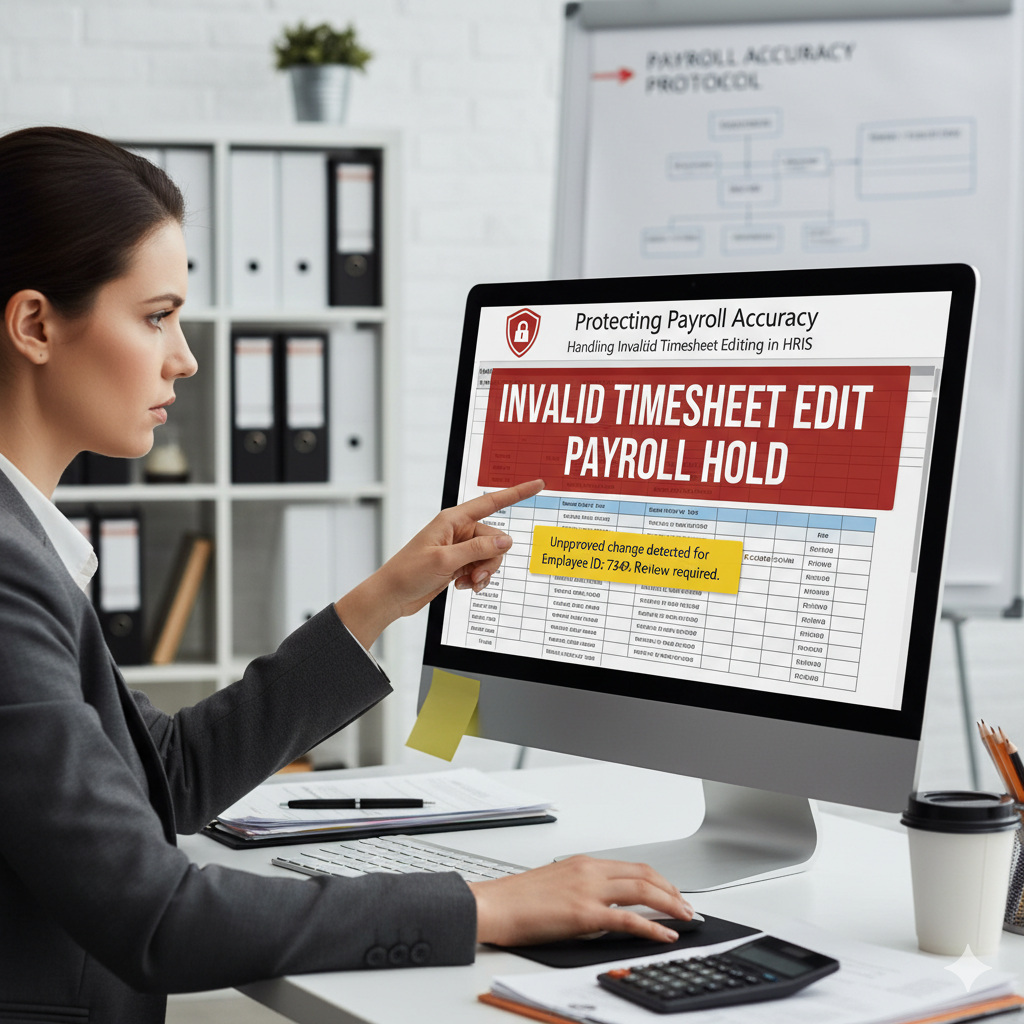Payroll accuracy is one of the cornerstones of employee trust and organizational compliance. Yet, even the most advanced Human Resource Information Systems (HRIS) can face challenges when it comes to invalid timesheet editing. Whether caused by human error, unauthorized changes, or system misconfigurations, incorrect timesheet entries can lead to payroll discrepancies, compliance violations, and unnecessary administrative headaches.
In this article, we’ll explore how to identify, prevent, and manage invalid timesheet edits within an HRIS to ensure accurate payroll processing and maintain organizational integrity.
What Is Invalid Timesheet Editing in an HRIS System?
Invalid timesheet editing refers to any unauthorized or erroneous change made to an employee’s time record within the HRIS (Human Resource Information System). These edits may include:
- Entering inaccurate working hours or overtime
- Adjusting clock-in or clock-out times after submission
- Modifying approved leave or attendance records
- Deleting time entries to manipulate total hours
Such actions—whether intentional or accidental—can disrupt payroll accuracy, cause compliance risks under labor laws, and undermine trust in HR processes.
Common Causes of Invalid Timesheet Edits
- Lack of Role-Based Access Control (RBAC): When multiple users have editing rights without proper restrictions, the chances of unauthorized changes increase significantly.
- Poor Timesheet Validation Rules: Weak validation settings allow entries outside of standard work hours or incomplete clock data to be saved.
- Manual Data Entry Errors: Human mistakes during manual entry—like typing the wrong time or date—can easily go unnoticed without verification protocols.
- System Bugs or Syncing Issues: Technical glitches between HRIS modules (e.g., attendance and payroll) may lead to corrupted or duplicated data.
- Lack of Audit Trails: Without audit logs, tracking who made specific changes becomes nearly impossible, making accountability difficult.
Impact of Invalid Timesheet Editing on Payroll
- Payroll Inaccuracies: Even small time discrepancies can cause overpayments or underpayments.
- Compliance Risks: Incorrect records can violate labor and wage laws, exposing the organization to penalties.
- Employee Dissatisfaction: Pay errors can lead to frustration, distrust, and reduced morale.
- Administrative Burden: HR teams spend additional time reconciling errors and validating timesheets.
How HRIS Systems Help Prevent Invalid Timesheet Editing
Modern HRIS platforms offer advanced controls to minimize timesheet-related issues. Here’s how to leverage them effectively:
- Implement Role-Based Permissions: Assign specific roles and access levels. For example, allow supervisors to review but not edit approved timesheets.
- Enable Audit Trails and Change Logs: Keep a detailed record of who made edits, when, and why. Audit logs create transparency and accountability.
- Automate Validation Rules: Set up automated rules that flag or reject invalid entries—such as negative hours or excessive overtime.
- Integrate with Biometric or Attendance Systems: Direct integration reduces manual input errors and prevents falsified time data.
- Schedule Regular Data Audits: Conduct periodic audits to identify recurring issues and refine validation rules accordingly.
- Employee Self-Service Portals: Empower employees to view their logged hours in real-time, ensuring transparency and early detection of errors.
Best Practices for HR and Payroll Teams
- Train Employees Regularly: Ensure all staff understand the importance of accurate time reporting.
- Set Clear Policies: Define and communicate timesheet submission and editing policies organization-wide.
- Use Alerts and Notifications: Configure automated alerts for any edited or deleted timesheet entries.
- Perform Random Spot Checks: Periodically verify timesheets against attendance or project data.
- Collaborate Between HR and IT: Ensure your HRIS is properly configured and updated with the latest patches.
Conclusion
Invalid timesheet editing may seem like a minor issue, but its impact on payroll accuracy and organizational compliance can be significant. By using the built-in controls of your HRIS system—such as audit logs, role-based access, and automated validations—you can greatly reduce errors and maintain trustworthy payroll operations.
An effective HRIS timesheet management strategy not only protects your company’s finances but also strengthens employee confidence and operational transparency.

